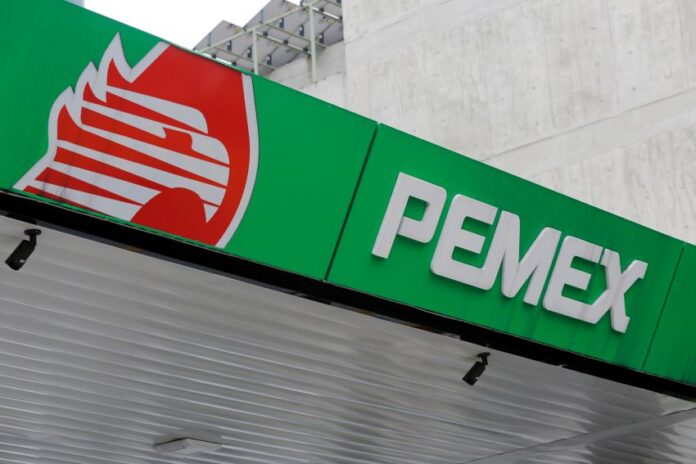Mexico’s state-owned oil company Pemex reported its first quarterly profit in a year, booking a net profit of 59.52 billion pesos (US $3.17 billion) during the second quarter despite a decline in revenues.
The rise in Pemex’s fortunes was helped largely by the peso’s favorable exchange rate, but the company — the world’s most indebted energy firm — still faces considerable challenges.
Presenta Pemex sus resultados del segundo trimestre de 2025
Comunicado Nacional: https://t.co/5tApaSQjRD#Pemex #PorElRescateDeLaSoberanía pic.twitter.com/M8og0KWUZ6
— Petróleos Mexicanos (@Pemex) July 28, 2025
Crude and condensate production continued to fall — dipping 8.6% compared to last year’s second quarter — as well as natural gas production, which was down 3.7% compared to Q2 2024. Pemex also reported a financial debt of US $98.8 billion at the end of the quarter and revealed that it owes providers US $22.79 billion.
Still, as the peso rose against the dollar, the positive currency effects allowed Pemex to overcome a drop in revenues.
Pemex disclosed in regulatory filings that second-quarter revenues declined 4.4% to 391.62 billion pesos (US $20.9 billion), citing reduced crude oil volumes and lower prices for refined products, including gasoline and diesel.
Lower gasoline production also prompted a rise in U.S. imports during the quarter, contributing to sinking revenues and fears that Mexico could become a net oil importer due to a consistent decline in production, underinvestment and mounting debt.
Even as Pemex faces a financial chokehold, the unexpected quarterly earnings report not only gives the company more time to breathe, but also provides impetus to a new government plan to prop up the beleaguered oil giant.
The Finance Ministry announced last week that it would launch a new dollar-denominated debt issue, involving “Pre-Capitalized Notes,” a form of financing designed to strengthen Pemex’s balance sheet without a direct government guarantee.
Mexico’s gas production falls short as US imports surge to record levels
Following last week’s announcement, credit rating agency Fitch placed Pemex on “rating watch positive,” describing the transaction as “credit positive” while lauding Mexico’s “willingness and ability to provide substantial support” to the oil company.
Even so, the online news platform Oil Price reported that “[Pemex’s] financial profile and earnings outlook remain persistently weak.” And according to Fitch, the oil company still faces “negative funds from operations, declining profit margins on the back of lower production and oil prices, as well as unrelenting losses in its downstream business.”
After the quarterly results were published, company executives told investors Pemex was intent on increasing crude oil production to the government’s goal of 1.8 million barrels per day, news agency Reuters reported.
The executives said so-called mixed contracts would be offered to private companies, and Pemex would continue to rely on government support. The company received 80 billion pesos (US $4.26 billion) in government support in the first quarter. The funds were mainly used to pay down debt.
In this year’s first quarter, Pemex reported a net loss of US $2.3 billion. Last year’s losses amounted to roughly US $30 billion, Reuters reported, with fourth-quarter losses alone coming in at US $9 billion.
With reports from Reuters, Animal Político, El Financiero and Oil Price
